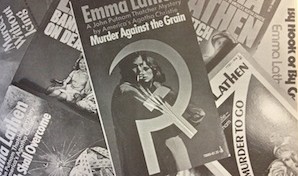Jan Dailey Schnell ’65: A Light Touch for Pets in Pain

Jan Dailey Schnell ’65 is certified by the American Veterinary Chiropractic Association, which supplied this photo.
Jan Dailey Schnell’s path from conventional veterinarian to veterinary chiropractor—one of only about 500 in the world—started with an injured sled dog.
“He had run into the side of a pickup truck,” Schnell recalls. “He was in my office, and you could see his back was out of position. I did what I was taught to do: Give him steroids, and get him up walking again. He was walking, but he was pretty miserable. His owners eventually took him to their chiropractor, and he was able to get the dog off of steroids. He wasn’t a sled dog again, but he was a pet dog, and he felt a lot better.”
Schnell describes the experience as a “game changer” for her. A 1987 graduate of the University of Minnesota College of Veterinary Medicine, she sought out the American Veterinary Chiropractic Association—the leading organization of its kind—and became a certified veterinary chiropractor in 1997. She does continuing education to renew her certificate every three years, and practices in her home state of Wisconsin as well as in Minnesota and Ontario.
Unlike the majority of veterinary chiropractors, who focus on horses, Schnell specializes in small animals—dogs and cats, mostly, but also rabbits, ferrets, birds, turtles, and more. She uses chiropractic to treat everything from ear infections and collapsing trachea in dogs to hairballs and abscesses in cats. She even fixed a parakeet’s eye problem by realigning the little bird’s eyeball with its socket. “With chiropractic you can do things you couldn’t otherwise do,” she says.
Getting permission from pet owners to adjust their animals can mean countering assumptions that chiropractic is painful or scary, Schnell says. “Most of my clients, when you say ‘chiropractic,’ they think it’s going to be wham, bang, pop, and that the animals will have to be held down,” she says.
Not so. Schnell has developed a kinder, gentler technique—she calls it “butterfly-light manipulation”—that puts animals at ease, so much so that they commonly fall asleep. “Chiropractors need to move in the direction I have, which is to make it totally painless,” she says. “I tell my clients, ‘It shouldn’t hurt.’”
—By Christina Barber-Just
December 5, 2012










Leave a Reply